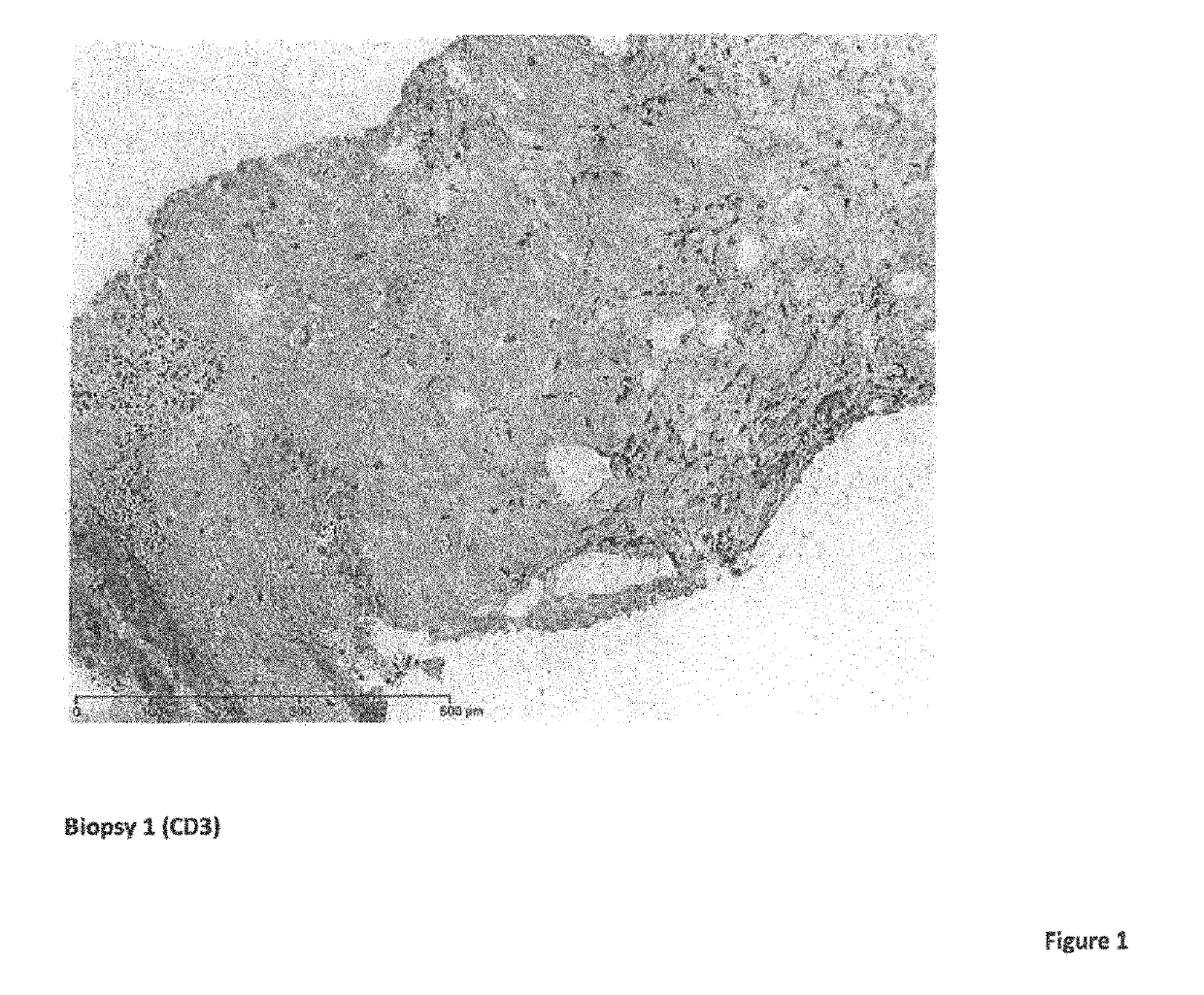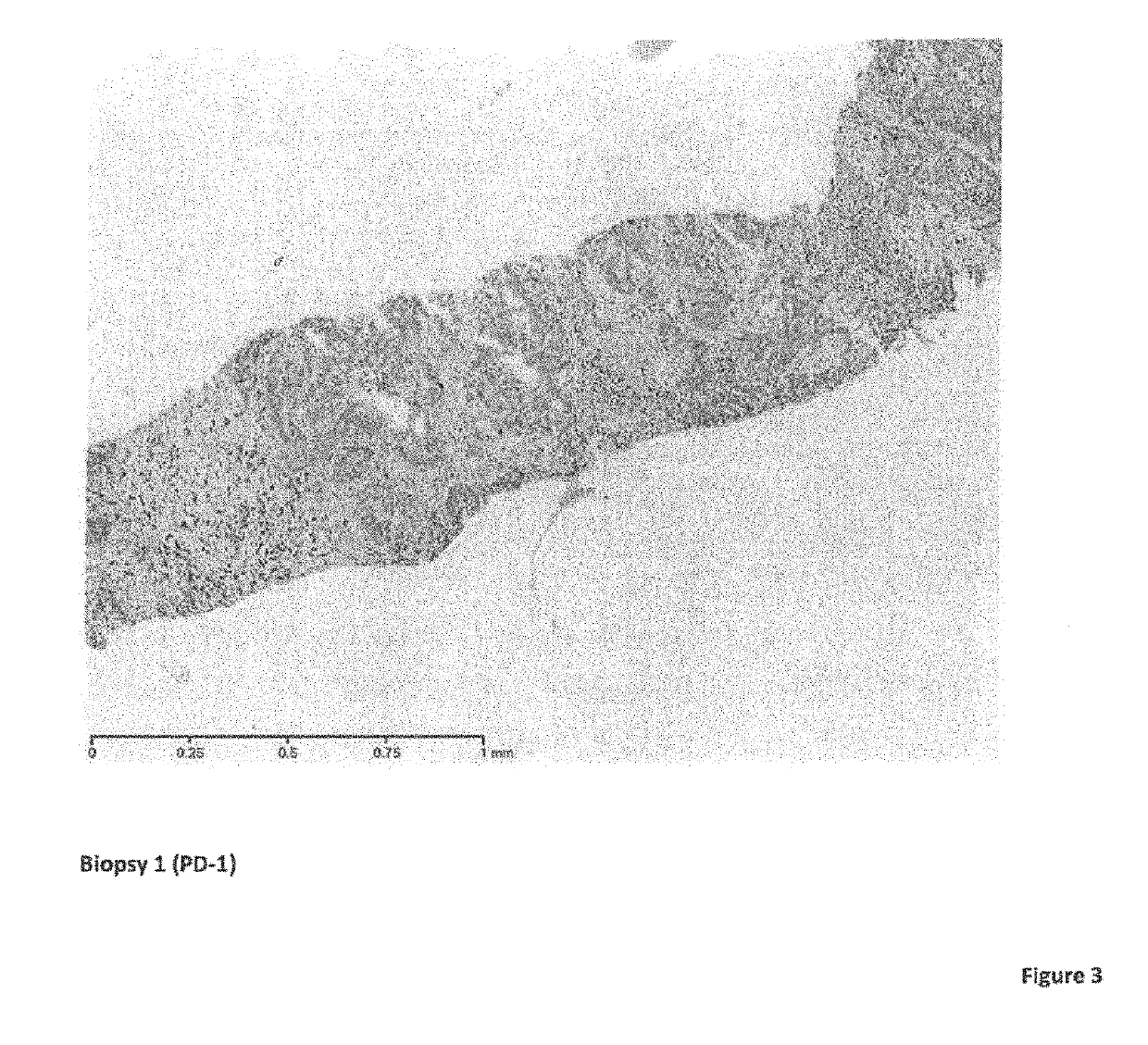Cancer therapy with an oncolytic virus combined with a checkpoint inhibitor
a technology of oncolytic virus and checkpoint inhibitor, which is applied in the field of pharmaceutical compositions, can solve the problems of cancer cells that are often defective in their ability, cancer is the most costly disease, and already huge economic burden is expected to continue to grow
- Summary
- Abstract
- Description
- Claims
- Application Information
AI Technical Summary
Benefits of technology
Problems solved by technology
Method used
Image
Examples
example 1
ethods
[0086](a) Fluorescence In Situ Hybridization (FISH)
[0087]Fish Assay:
[0088]The method procedure was performed essentially as described by Silahtaroglu et al (Molecular and Cellular Probes. 2003; 17:165-169) and Nehmé et al (J Neurosci Methods. 2011; 196:281-288). The FISH assay was first established in human NBK cells cultured in vitro and extended to paraffin-embedded tumor tissue deriving from human glioma xenografts in immunodefficient rats. The assay protocol was then applied for the detection of H-1PV DNA and RNA sequences in patient-derived paraffin-embedded or cryopreserved tumor material.
[0089]Positive and Negative Controls:
[0090]In each FISH assay, paraffin-embedded tumor tissue deriving from H-1PV- or mock-treated human glioma xenografts in rats were used as positive or negative controls, respectively. No probe (reagent substitution negative control; target-specific hybridization probe omitted) and mismatch (target-specific hybridization probe with 3-5 nucleotides swa...
example 2
Modality Treatment with Parvovirus H-1 and Checkpoint Inhibitor in a Patient Having a Metastasizing CRC (Colorectal Cancer)
[0115]A patient suffering from colorectal cancer (poorly differentiated adenocarcinoma of colon transversum; mutation status: KRAS WT, NRAS WT, MSS; first surgery 2013) with progressing liver metastases (progression in size and number) was treated with a cumulative dose of 1.2×109 PFU parvovirus H-1 applied in three consecutive daily infusions (4×108 pfu; day 1-3), followed by treatment with the immune checkpoint inhibitor pembrolizumab (Keytruda®) according to the manufacturer's posology (2 mg / Kg / BW, day 1). This treatment with the same dosage regimen was repeated after 5 weeks.
[0116]Biopsies performed on the liver metastasis were taken prior to treatment and at various time points during the treatment with the following surprising findings: in comparison to the first biopsy which was prior to the H-1PV+pembrolizumab treatment, lymphocytic infiltration was obse...
example 3
Modality Treatment with Parvovirus H-1 and Checkpoint Inhibitor in a Primary Inoperable GBM (Glioblastoma Multiforme) Patient
[0120]A patient suffering from inoperable glioblastoma multiforme was treated with a cumulative dose of 1.2×109 PFU parvovirus H-1 applied in three consecutive daily infusions, followed by treatment with pembrolizumab (Keytruda®) according to the manufacturer's posology (2 mg / Kg / BW, 3 days after H1-PV administration).
[0121]MRI was taken prior to the therapy and during the treatment with the H-1 PV+checkpoint inhibitor pembrolizumab. It revealed a size reduction of the tumor exceeding 30% after 55 days of treatment and a nearly complete remission at day 101. The patient is doing well and does not require any additional medication. The MRIs are shown in FIG. 16.
PUM
| Property | Measurement | Unit |
|---|---|---|
| diameter | aaaaa | aaaaa |
| time | aaaaa | aaaaa |
| time | aaaaa | aaaaa |
Abstract
Description
Claims
Application Information
 Login to View More
Login to View More - R&D
- Intellectual Property
- Life Sciences
- Materials
- Tech Scout
- Unparalleled Data Quality
- Higher Quality Content
- 60% Fewer Hallucinations
Browse by: Latest US Patents, China's latest patents, Technical Efficacy Thesaurus, Application Domain, Technology Topic, Popular Technical Reports.
© 2025 PatSnap. All rights reserved.Legal|Privacy policy|Modern Slavery Act Transparency Statement|Sitemap|About US| Contact US: help@patsnap.com



